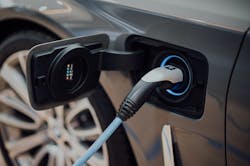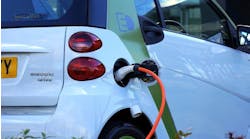June 30, 2021—For some, the recent boom of electric vehicle (EV) news may come as an exciting step forward for an industry in full transition.
But for many repair shop owners, EV headlines have become a regular source of anxiety. A widespread wave of EVs is sure to require additional staff training and expertise, but there’s also great expectation from consumers and trepidation amongst repairers that EVs will not need service as much or as often as gas models.
“If there are fewer mechanical parts to contend with, EV service costs should be lower, right?” said Renee Stephens, vice president-automotive for We Predict, a predictive analytics service firm, who posed the question during a recent Automotive Press Association presentation. “Wrong,” she said.
We Predict recently released its inaugural “Deepview True Cost” report, which analyzed early vehicle repair costs and found that service costs for full EVs were more than two times higher than gas or hybrid models, with EVs averaging a cost of $123 in the first three months in service while gas models an average of $53 in the same timeframe.
EV costs were just half that of gasoline models when it came to regular maintenance, but repair costs were twice as high and campaign (or recall) expenses were four times as high for EVs than gas models. Parts and labor expenses were also found to be twice as high for EVs than for gas or hybrid vehicles. Long story short, EVs aren’t the low maintenance silver bullet repairers might have expected—at least not yet.
Ratchet+Wrench checked in with Stephens for more insight on We Predict’s key findings.
Why don’t EVs cost less to maintain and repair than gasoline or hybrid vehicles?
I think there was an expectation that maintenance and service repairs would be lower than other vehicle types, and to see that repairs were actually double for EVs than they were on gas models or hybrid models was a shock to a lot of people. But once you really look into it, it’s not just that the parts themselve are more expensive, it’s the time people are spending trying to complete these repairs.
The reality is that EVs are requiring technicians to spend far more time just diagnosing what's going wrong and on the phone with manufacturers or even corporate headquarters to get to the heart of the issue. They're taking vehicles on multiple test drives, and this is all adding time.
So what we're seeing in the data is really the cost of an industry learning curve. These vehicles are new and technicians are still learning them as well, and the technicians repairing these vehicles are often highly certified and paid higher rates than others, so the industry transition we’re seeing here is coming at a cost.
How long could this learning curve span?
I think in the next five to 10 years we’ll be in a very different place, but right now with an onslaught of EVs coming our way, many of these are a first for manufacturers. They’re working out the kinks and figuring out how to build something that’s serviceable, quickly and at a lower cost, but also factors in the techbase that interacts with these vehicles out on the front line.
Vehicles that have only been around for a few generations don’t have that institutional learning under their belts. Models like the Nissan Leaf or the Chevrolet Bolt have been out for a while, have gone through a few generations and our data found they did improve dramatically over time but early on those vehicles were pretty high in cost too.
So much of that timeline depends on when these vehicles will launch and how long it takes to produce and work through changes on multiple generations.
What is We Predict’s biggest takeaway for repair shops?
After reading through thousands of comments from technicians, what was most surprising was truly how much time they spent finding a fix.
I don’t think the manufacturers realize the extra hours needed to repair some of these items and haven’t timed them right. We saw that with some manufacturers more than others which leads me to believe that somewhere down the line some paid attention and made changes while others need to look again.
This first report focused on the first three months of service and typically people might think “well isn’t that the manufacturer’s responsibility anyway?” and that’s true. But when you think about the costs those vehicles are going to accrue three years down the road, those costs have now been multiplied by 15.
This is the first chapter. These vehicles will become used vehicles that need to be serviced so these costs will impact the second or third owners and the shops they bring them to. Right now technicians are on the front line and are a huge partner in this industry. They’re the ones that know what’s serviceable and what’s not, so any feedback they can provide to the automakers is critical and will ultimately pay off for shops and consumers down the road. It’s vital to seeing what it really takes to get these vehicles fixed and done.




